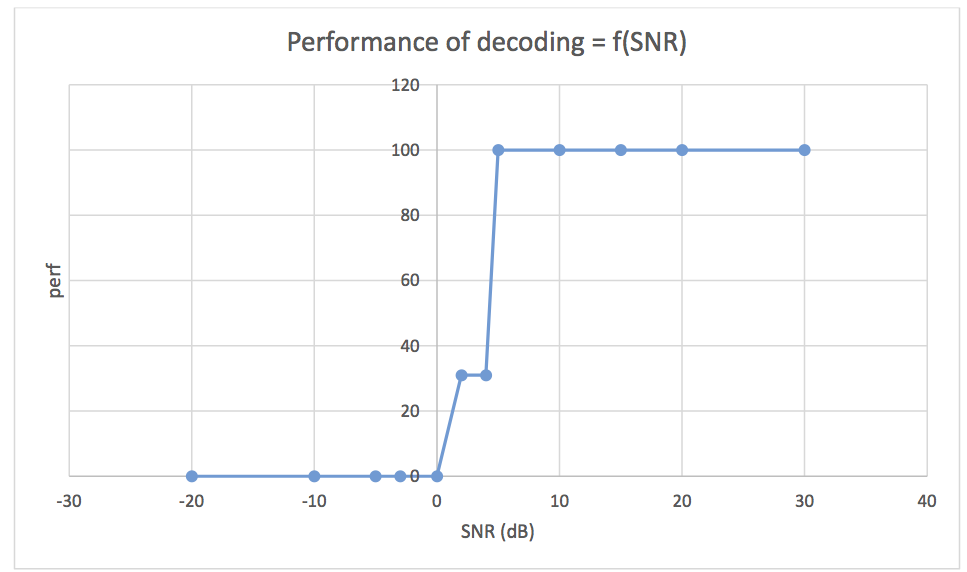All satellites are made equal. At least regarding one point: the need to send information about their health (the so called telemetry, TM for short).
During his project #1 (see our programme), Alexandre V. devised a morse decoder. But … hey … wait … what is the relation between morse code and telemetry ? Well, some small satellites (e.g., cubesats) send telemetry information encoded in morse.
The method he implemented is a four step approach:
- Filter the audio signal so to isolate relevent frequencies
- Detect power peaks to spot dash and dots
- Characterize the alphabet by measuring spaces between (morse) words and letters
- Decode the message
The figure below shows the morse signal after step 2 (i.e., filtering and detection).

Alexandre also evaluated how his morse decoder performs when facing noisy signals. The performance is defined as the ratio of signs (letters, figures) that are correctly decoded (knowing what the original message should be). And here are the results:

He’s been using LabView which makes his work a good candidate to be integrated in our LEO satellite ground station.
Nice work, Alexandre !
(and thanks to Marine C., professor at Telecom ParisTech who co-supervised the project).